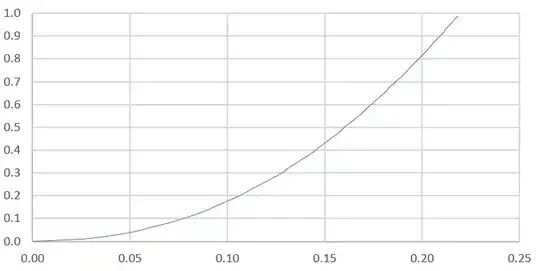Let $S$ denotes the area, $L$ the perimeter, and $R=\sqrt{S}/L$. I am computing some distributions related to these triangles, assuming they are randomly distributed. By random, I mean the three vertices are uniformly distributed on a circle of radius $\rho$. The reason that I am interested in $R$ is because this ration does not depend on the radius $\rho$ of the circle in question. It is invariant to the distribution of $\rho$, and independent of the unit used for measurements.
Of course the equilateral triangle has maximum area, but it also has maximum perimeter. Thus even though the maximum value of $R$ is very close to that corresponding to an equilateral triangle, it might not necessarily be exactly identical.
The plot below shows the distribution for $R$, that is $P(R<r)$ with $r$ on the X-axis and $P(R<r)$ on the Y-axis. Here $R$ is viewed as a random variable, as the vertices are random.
My question: My can you compute the maximum for $R$, exactly? Assume, without loss of generality, that the vertices are on the unit circle centered at the origin ($\rho=1$), and that one vertex is $(1,0)$. This eliminates several degrees of freedom. The max value for $R$ is around $0.25$.
